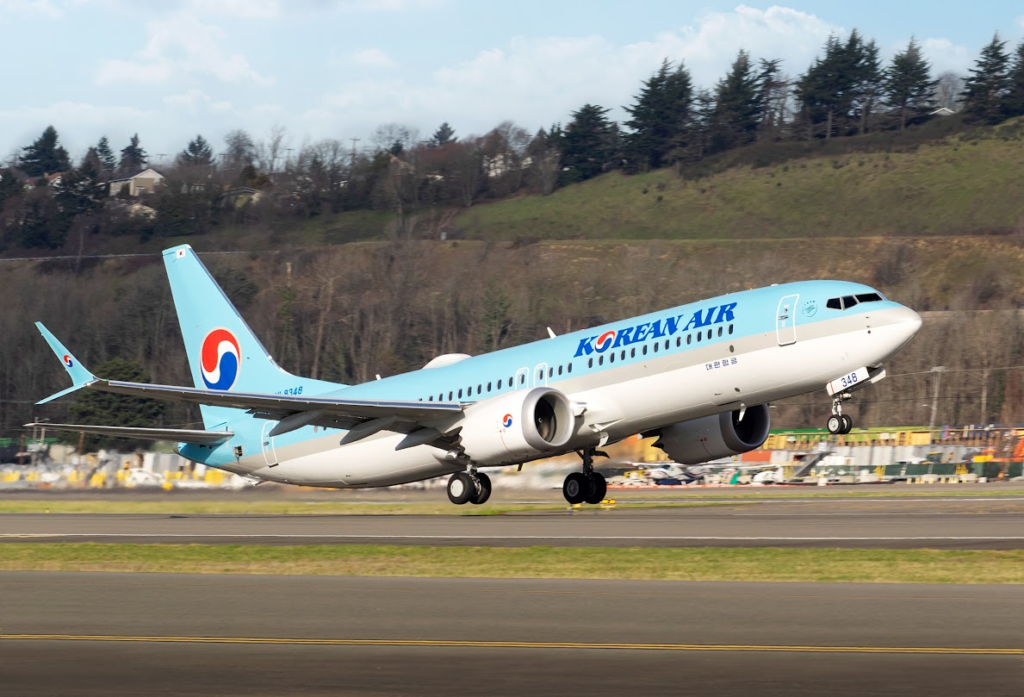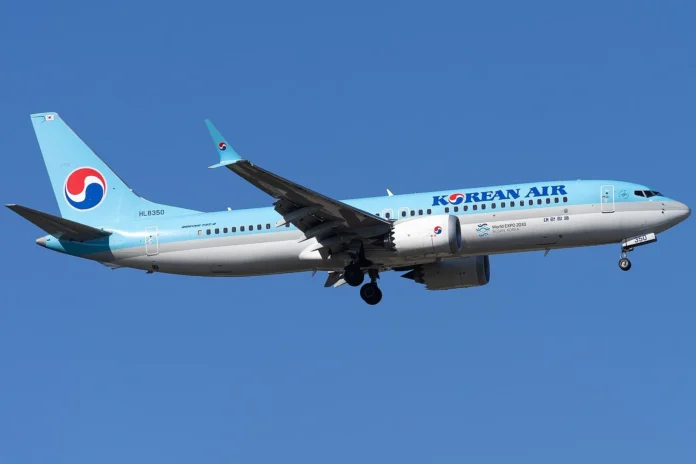SEOUL- On Saturday evening (June 22, 2024), passengers aboard a Korean Air (KE) Boeing 737 MAX 8 experienced severe nosebleeds and ear pain following pressurization problems approximately 50 minutes after departing from Seoul Incheon Airport (ICN).
The 4-year-old Boeing 737 MAX 8, registered as HL8352, enroute to Taichung (RMQ), Taiwan, had to enter a holding pattern over Jeju Island, South Korea, as the pilots attempted to resolve the issue. Ultimately, the aircraft returned to Seoul.

Malaysia Airlines 737 MAX
The sudden cabin pressure drop caused nosebleeds in at least two passengers, severe ear pain in 15 others, and required emergency medical attention for one individual.
A passenger on flight KE189 captured video footage showing all passengers using oxygen masks that had automatically deployed. The pilots quickly descended from over 30,000 feet to 8,000 feet before safely returning to Seoul, which is drop of over 25,000 feet in 12-15 minutes.
The exact cause of the pressurization problem on the Korean Air Boeing 737 MAX remains unknown. An official from South Korea’s Ministry of Land, Infrastructure and Transport confirmed that the pilots conducted a rapid descent due to oxygen issues in the cabin following an ‘overpressure system’ warning on the flight deck.

Pressurization Issues
Aircraft pressurization issues can stem from various factors, including major structural failures like the mid-cabin exit door blowout on Alaska Airlines (AS) Flight 1283 on January 26, or a faulty door seal that prevents proper pressurization.
Other potential causes include a malfunctioning control valve, sensor failure, or issues with the software designed to regulate cabin pressure.
In this incident, 16 passengers on Korean Air flight KE189 were transported to the hospital, while two others chose to seek medical attention later.
Last month, a major incident occurred with Singapore Airlines (SQ) flight from London Heathrow (LHR), when aircraft went through a severe and extremely dangerous turbulence. Following this, many passengers sustained heavy injury, one also died on the flight SQ321.
There is rise in such turbulence and pressurization related incidents and airline need to focus on technology that detect or predict turbulence and warn pilot and ATC to avoid flying through it.
Join us on Telegram Group for the Latest Aviation Updates. Subsequently, follow us on Google News.
The post Korean Air 737 MAX 8 Drops 25,000 feet, Passengers Nosebleed and More appeared first on Aviation A2Z.

